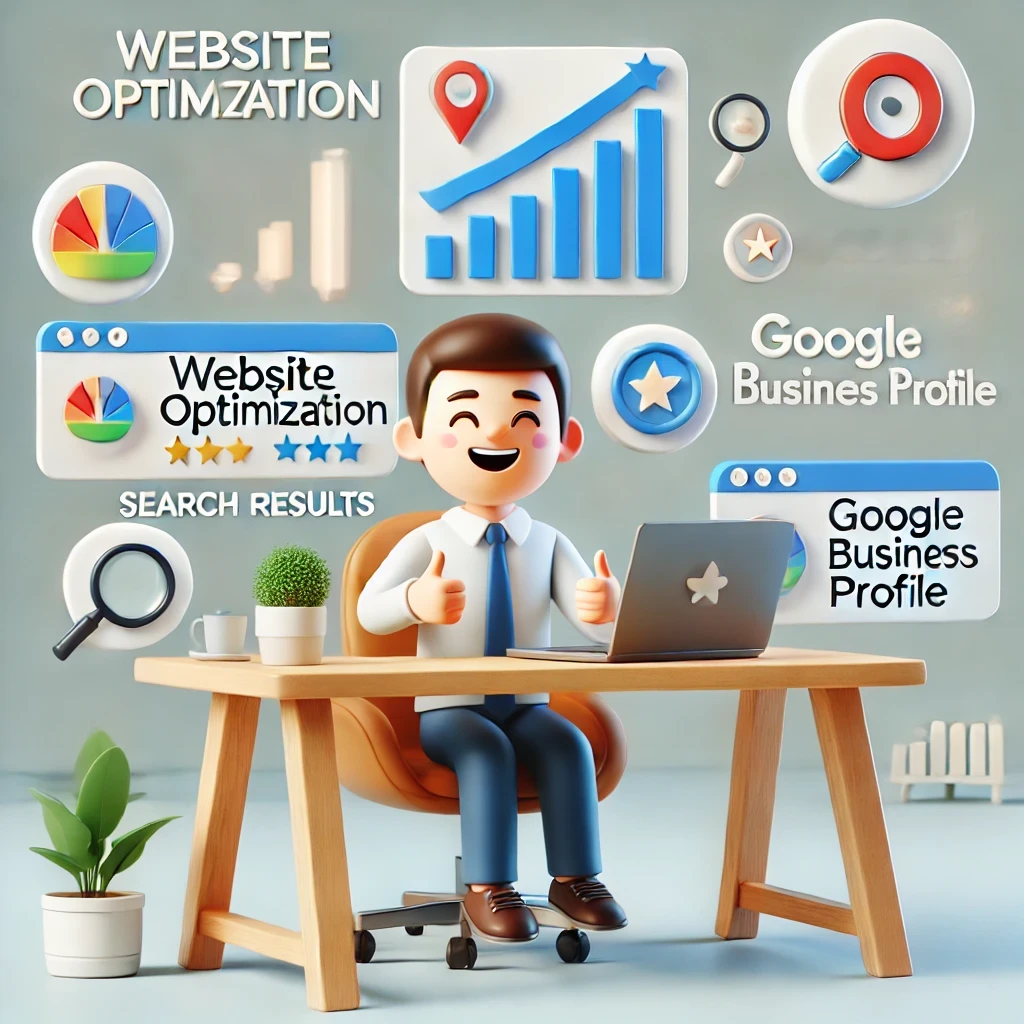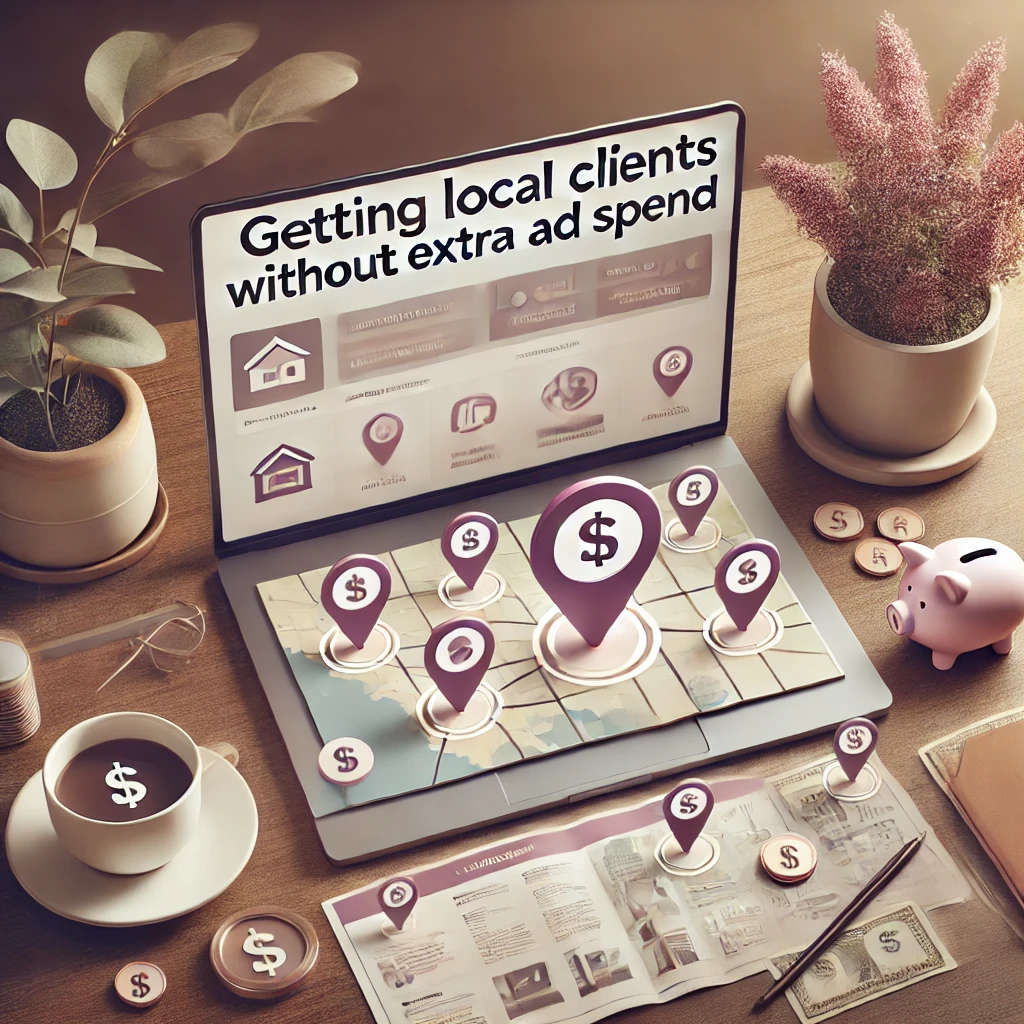Digital Marketing for Small Business Owners: A Guide to Boost ROI and Attract More Clients
For small business owners like home cleaners, pressure washers, contractors, auto repair shops, painters, and gutter cleaners, the idea of digital marketing can feel overwhelming. Many are trying to run their businesses with limited time, minimal budgets, and little knowledge of digital tools. To make matters worse, some invest in digital marketing efforts but see little to no return on investment (ROI).
This guide addresses the unique pain points faced by small business owners, followed by actionable steps to help them attract more clients. Let’s dive into each challenge and provide a practical solution that makes the effort truly worthwhile.

Understanding Small Business Pain Points in Digital Marketing
1. Lack of Tech-Savviness
Many small business owners feel lost with digital marketing tools and concepts. SEO, social media algorithms, and Google Business Profile optimization may sound complex and time-consuming.
2. Limited Time for Marketing
Running a small business is time-intensive. Marketing often takes a back seat as they prioritize core business activities. Finding the time to post regularly, manage online profiles, or create content seems nearly impossible.
3. Limited Budget and Skepticism About ROI
Small business owners often see marketing as an “add-on” rather than a core necessity. Many have tried different strategies and platforms, spending money but seeing no real client increase, leading to skepticism about the value of digital marketing.

4. Incomplete or Poorly Optimized Website
Some businesses may not have a website at all, while others might have outdated or unoptimized sites that fail to attract visitors or convert leads into clients.
5. Google Business Profile and Local SEO Are Not Optimized
Many small business owners either do not have a Google Business Profile or have one that’s poorly optimized. Missing details, unclaimed listings, or incorrect information can hinder potential clients from finding them locally.
Solutions to Achieve ROI through Digital Marketing

Here’s how small business owners can overcome these challenges and attract more clients without feeling overwhelmed.
1. Get Started with a Simple, Effective Website
A website doesn’t have to be complex to be effective. Start with a one-page site or a simple landing page that includes:
- Your contact information: Phone, email, and a contact form.
- Services offered: Clearly list the main services you provide.
- Customer testimonials: Social proof builds trust with potential clients.
- A call-to-action (CTA): Encourage visitors to book a service, get a quote, or contact you.
Tip: Use website builders like Wix or WordPress for affordable, easy-to-use templates.
2. Optimize Your Google Business Profile
A well-maintained Google Business Profile is one of the simplest, most cost-effective ways to attract local clients.
Here’s how to optimize it:
- Claim and Verify Your Profile: Visit Google Business and follow the steps to claim your business.
- Add Complete Information: Fill in your business name, address, phone number, hours, and a short description.
- Select Categories and Services: Choose relevant business categories, such as “home cleaning” or “auto repair,” and list each service separately.
- Post Regularly: Share updates, special offers, and pictures of recent work.
- Request and Manage Reviews: Encourage satisfied clients to leave positive reviews, and respond to all reviews to build trust.

3. Build Your Presence with Social Media (in 30 Minutes a Week)
Social media can be manageable even with a limited schedule:
- Choose One Platform to Start: If your clients are on Facebook, begin there. LinkedIn may work better for contractors or painters who work with businesses.
- Post Client-Centric Content: Share before-and-after photos, client testimonials, and simple tips related to your services.
- Utilize Scheduling Tools: Use tools like Buffer or Hootsuite to batch posts once a week and schedule them to go live on different days.
Tip: Keep posts engaging with questions like “Which cleaning service would you find most useful?” to encourage interaction.
4. Embrace Simple, Targeted Paid Ads (If Budget Allows)
Paid ads, like Google Ads or Facebook Ads, can help you reach potential clients quickly. Start small with location-based ads.
- Focus on Localized Keywords: Keywords like “gutter cleaner near me” or “pressure washing in [City]” target clients looking for nearby services.
- Set a Daily Budget: A small daily budget of $5-$10 can generate clicks from potential clients actively looking for your services.
- Analyze the Results: Use ad platforms’ analytics to measure clicks, calls, or contact form submissions. Shift your budget towards keywords that perform best.

5. Use Local SEO Techniques to Rank Higher in Searches
Local SEO helps you appear in local search results when clients look for services like yours. Here’s how:
- Optimize Website Content: Include location keywords (e.g., “gutter cleaning in [City]”) in your website’s text and metadata.
- Register in Local Directories: Add your business to online directories like Yelp, Bing Places, and Yellow Pages. Consistency in your business name, address, and phone number across these platforms is crucial.
- Encourage Reviews: Google reviews can increase your visibility in search results, so remind happy clients to leave a review.
6. Provide Value with a Regularly Updated Blog or FAQ Section
Adding an FAQ section or blog to your website can build trust and improve search rankings. Write about topics that answer common questions:
- Example Topics: “How Often Should You Clean Your Gutters?” or “Top 5 Auto Repairs You Shouldn’t Delay”
- Optimize with Keywords: Include phrases your clients would search for, like “auto repair tips” or “affordable pressure washing.”
- Consistency Is Key: Aim for 1-2 posts per month. It helps with SEO and establishes you as an authority in your field.

Bringing It All Together: Focus on ROI through Tracking
To ensure you’re getting ROI from your digital marketing, track results consistently:
- Website Traffic: Use Google Analytics to track visitors, their source (Google, social media, etc.), and the pages they visit.
- Google Business Profile Insights: Google provides insights on how many people found your business profile, viewed your photos, or clicked on your contact details.
- Social Media Engagement: Monitor likes, shares, comments, and direct messages. Track which posts bring the most inquiries or clicks to your website.
- Lead Tracking: Use a CRM tool to record leads, their source, and any conversions.
Regularly reviewing these metrics will help you understand which efforts are driving clients and which might need adjustment.
Conclusion
Digital marketing can transform your small business, helping you reach more clients and increase ROI. By focusing on a strong website, an optimized Google Business Profile, social media consistency, and local SEO, you can start to see tangible returns. Remember, digital marketing doesn’t have to be overwhelming. Small, consistent steps over time will build momentum and lead to a sustainable client base.
Get started today, and watch as these efforts bring your small business the growth it deserves!







